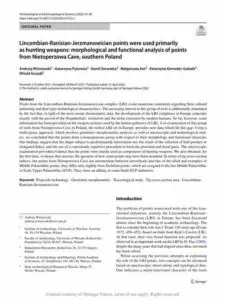Clan of the Cave Bear comes to life after 40 years
 New evidence, Jean Auel, author of the Clan of the Cave Bear bestselling series, has just been proven right. Auel’s first novel Clan of the Cave Bear, and the continuing series of 4 additional books, revolved around the premise of Homo sapiens and Neanderthals living in the same environment over a period of thousands of years in southern Europe.
New evidence, Jean Auel, author of the Clan of the Cave Bear bestselling series, has just been proven right. Auel’s first novel Clan of the Cave Bear, and the continuing series of 4 additional books, revolved around the premise of Homo sapiens and Neanderthals living in the same environment over a period of thousands of years in southern Europe.
It was long believed that Neanderthals and Homo sapiens lived side-by-side for only 2k maybe 3k years across central and western Europe. But just released evidence shows Neanderthals may have lived contemporaneously with modern Humans for up to 15,000 years.
Paleoanthropologists for decades believed that they lived in the same environment likely in Spain and southern France, at most 5,000 years.
Now that period has been extended thanks to two magnificent archaeological finds, one in France, and another in Germany.
The story behind the discovery at the Castle in Germany is like something straight out of Indiana Jones.
Archaeologists had been digging at the Castle for 4 decades. Excavations continued at another sector of the castle grounds, in what appeared to be a sunken in cave. There was a giant boulder 6 foot in diameter blocking the entrance to the cave.
After heavy equipment was brought in, they managed to remove the boulder. Within hours the archaeologists on scene began to find spear points and human bones. The bones were later confirmed to be from Homo sapiens.
From Phys.org, March 2024,
Neanderthals and humans lived side by side in Northern Europe 45,000 years ago, genetic analysis finds
 A genetic analysis of bone fragments unearthed at an archaeological site in central Germany shows conclusively that modern humans—Homo sapiens—had already reached Northern Europe 45,000 years ago, overlapping with Neanderthals for several thousand years before the latter went extinct.
A genetic analysis of bone fragments unearthed at an archaeological site in central Germany shows conclusively that modern humans—Homo sapiens—had already reached Northern Europe 45,000 years ago, overlapping with Neanderthals for several thousand years before the latter went extinct.
The findings establish that the site near Ranis, Germany, which is known for its finely flaked, leaf-shaped stone tool blades, is among the oldest confirmed sites of modern human Stone Age culture in north central and northwestern Europe.
Lincombian–Ranisian–Jerzmanowician
It is abbreviated to LRJ. The phrase simply refers to the spatio-temporal of a lithics industry in central Europe. The lithics industry was known for leaf style spear points. This craftmanship was later seen in other European populations such as the Gravettians and Solutreans.
Archaeologists assumed it was Neanderthals who made the stone tools
More from Phys.org:
 The stone blades at Ranis, referred to as leaf points, are similar to stone tools found at several sites in Moravia, Poland, Germany and the United Kingdom. These tools that are thought to have been produced by the same culture, referred to as the Lincombian–Ranisian–Jerzmanowician (LRJ) culture or technocomplex.
The stone blades at Ranis, referred to as leaf points, are similar to stone tools found at several sites in Moravia, Poland, Germany and the United Kingdom. These tools that are thought to have been produced by the same culture, referred to as the Lincombian–Ranisian–Jerzmanowician (LRJ) culture or technocomplex.
Because of previous dating, the Ranis site was known to be 40,000 years old or older, but without recognizable bones to indicate who made the tools, it was unclear whether they were the product of Neanderthals or Homo sapiens.
The ecology, subsistence and diet of ~45,000-year-old Homo sapiens at Ilsenhöhle in Ranis, Germany
Recent excavations at Ranis (Germany) identified an early dispersal of Homo sapiens into the higher latitudes of Europe by 45,000 years ago. Here we integrate results from zooarchaeology, palaeoproteomics, sediment DNA and stable isotopes to characterize the ecology, subsistence and diet of these early H. sapiens. We assessed all bone remains (n = 1,754) from the 2016–2022 excavations through morphology (n = 1,218) or palaeoproteomics (zooarchaeology by mass spectrometry (n = 536) and species by proteome investigation (n = 212)).
Dominant taxa include reindeer, cave bear, woolly rhinoceros and horse, indicating cold climatic conditions. Numerous carnivore modifications, alongside sparse cut-marked and burnt bones, illustrate a predominant use of the site by hibernating cave bears and denning hyaenas, coupled with a fluctuating human presence. Faunal diversity and high carnivore input were further supported by ancient mammalian DNA recovered from 26 sediment samples.
Bulk collagen carbon and nitrogen stable isotope data from 52 animal and 10 human remains confirm a cold steppe/tundra setting and indicate a homogenous human diet based on large terrestrial mammals. This lower-density archaeological signature matches other Lincombian–Ranisian–Jerzmanowician sites and is best explained by expedient visits of short duration by small, mobile groups of pioneer H. sapiens.



